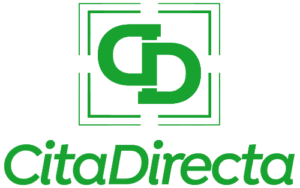AI is no longer buzzword. It is becoming a key component of workplace productivity for many companies, including small businesses. According to SLACK’s latest workforce index, the use of Daily AI among desk workers since November is 233%, which is a tool that many people cannot overlook. As 60%of Desk Workers uses AI and 42%regularly, small business owners need to understand the relevance of these trends to maintain competitiveness.
This survey, with more than 5,000 respondents in various sectors, emphasizes the deformation of AI integration for workplace productivity, focus and job satisfaction. Workers who use AI DAILY have increased 64% higher productivity, 58% higher focus, and more than 81% of job satisfaction compared to non -AI colleagues.
Denise Dresser, CEO of Slack, said, “AI promises are becoming a reality. They can be more productive, less stressful and fulfilled. «
As more workers switch to AI tools, understanding the specific advantages provided by these technologies are essential for small businesses to improve their operation.
An important result in the survey is that 96%of AI users have used technology for work that could not be completed by themselves. This trend, often called «Vibecoding», allows employees to solve specialized tasks beyond the general range. For example, if a business owner lacks graphic design technology, the AI tool can help to create presentation graphics, reducing the dependence on professional staff.
In addition, AI automates repetitive tasks, provides real -time feedback, and integrates various tools for smooth workflows so that employees can work more efficiently. Actual use includes fast access to data, writing support, ideas brainstorming and even ordinary responsibility.
However, the owner of small businesses must know the potential tasks that arise with the adoption of AI. While large corporations lead the AI rates (30%of companies with more than 1,000 employees every day), only 14%of small business employees can say the same. The main barriers have no clear guidelines and have no support for the use of AI, which can interfere with passion and participation. As mentioned in the study, 29%of desk workers did not provide official guidelines for AI, and 50%said that the use of AI was not explicitly recommended.
The advantages of AI are also expanded beyond practical productivity measurements. Workers who express their familiarity and confidence in the use of AI tools are 62% higher than those who feel belonging to their colleagues and work at work and do not use AI. In the case of small businesses, fostering these community senses while utilizing AI technology can improve employee satisfaction and maintenance.
Haley Gault, the senior account manager of Salesforce, said, “What we see is that AI is not replacing human interactions, but suggesting support to enrich them.” By offsetting repetitive tasks, it can bring more empathy, creativity and strategic thinking.
Small business owners should consider the following executable strategies when trying to use the power of AI.
- Encourage the use of AI: Allows employees to explore AI tools, encourage innovation and increase their adoption rates.
- Provide a clear guideline: Set the formula and unofficial framework for using AI to understand how to effectively integrate employees in workflow.
- Invest in training: Consider providing workshops or resources to build AI literacy at all levels of your organization. This investment can give power to all employees, regardless of its role or expertise.
- Monitoring and evaluation: In order to evaluate the AI’s effect on productivity and employee satisfaction, regular check -in can be performed to make the necessary adjustment and improvement over time.
In summary, the SLACK’s workforce index presents a strong case in integrating AI in daily business operation. As AI becomes the mainstream, the potential for small businesses to increase efficiency and increase employee satisfaction is enormous. By adopting these practices, small business owners not only maintain competition, but also redefine a better working environment.
To see more insights on this topic, check the entire slack article. Slack blog.
Image through ENVATO


